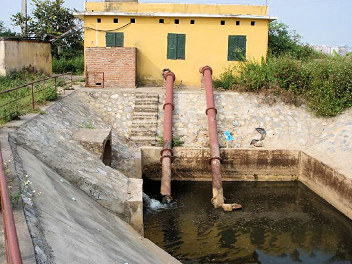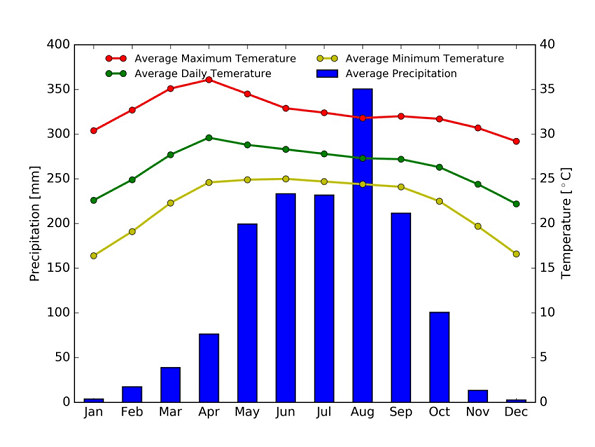The site
Geographical location
This case study considers the activities in aquatic plant production mainly in 4 big cities in South-East Asia: Hanoi, Ho Chi Minh City, Phnom Penh, and Bangkok. For more information about the geographical location of theses cities open the map in Google maps.
Demography of the cities
Hanoi is the capital of Vietnam. It covers an area of 3,328.9 square kilometres (1,285 sq mi). With an estimated population of 7.7 million as of 2018, it is the second largest city in Vietnam. The metropolitan area, encompassing nine additional neighbouring provinces, has an estimated population of 16 million. Located in the central area of the Red River Delta, Hanoi is the commercial, cultural, and educational centre of Northern Vietnam. Having an estimated nominal GDP of US$32.8 billion, it is the second most productive economic centre of Vietnam, following Ho Chi Minh City.
Ho Chi Minh City, also known by its former name of Saigon, is the most populous city in Vietnam with a population of 8.4 million (13 million in the metropolitan area) as of 2017.Located in southeastern Vietnam, the metropolis surrounds the Saigon River and covers about 2,061 square kilometres (796 square miles). From 1955 to 1975, Saigon was the capital of the Republic of Vietnam, commonly known as South Vietnam.
Phnom Penh is the capital and most populous city in Cambodia. Phnom Penh has been the national capital since French colonization of Cambodia, and has grown to become the nation's economic, industrial, and cultural center. Once known as the "Pearl of Asia," it was considered one of the loveliest French-built cities in Indochina in the 1920s. Phnom Penh, along with Siem Reap and Sihanoukville, are significant global and domestic tourist destinations for Cambodia. Founded in 1372, the city is noted for its historical architecture and attractions. It became the national capital in 1434 following the fall of Angkor, and remained so until 1497. It regained its capital status during the French colonial era in 1865. There are a number of surviving French colonial buildings scattered along the grand boulevards. On the banks of the Tonlé Sap, Mekong, and Bassac Rivers, Phnom Penh is home to more than 2 million people, approximately 14% of the Cambodian population.
The city of Bangkok has a population of 8,305,218 according to the 2010 census, or 12.6 percent of the national population. In 2018, the population has been estimated to be about 10 million. Roughly half are internal migrants from other Thai provinces. Only 5,692,284 residents, belonging to 2,672,423 households, registered Bangkok as their legal domicile, according to 2014 statistics. Much of Bangkok's daytime population commutes from surrounding provinces in the Bangkok Metropolitan Region, the total population of which is 14,626,225. Bangkok is a cosmopolitan city; the census showed that it is home to 567,120 expatriates from Asian countries (including 71,024 Chinese and 63,069 Japanese nationals), 88,177 from Europe, 32,241 from the Americas, 5,856 from Oceania and 5,758 from Africa. Migrants from neighbouring countries include 216,528 Burmese, 72,934 Cambodians and 52,498 Lao. In 2018, numbers show that there are 370,000 international migrants registered with the Department of Employment, more than half of them migrants from Cambodia, Laos, and Myanmar. Source: Wikipedia, http://en.wikipedia.org
Water source and quality
Water – often wastewater - is pumped into the plots by most of the growers in the three cities, with most of Phnom Penh production of aquatic plants coming from one large waste water lake/wetland fed with 80% of the city’s waste water. In Hanoi the aquatic plant growers are located along each of the city’s five waste water rivers, with producers in each commune normally sharing an electrically powered pumping station which used to be used for irrigating the former rice paddy fields.

Weather and climate
An example for annual temperature and precipitation in Southeast
Asia, climate graph for Mukdahan, Thailand. The graph depicts the
monthly average data are from 1981-2010.

Source: Thai Meteorological Department (2016).
Hanoi features a warm humid subtropical climate (Köppen Cwa) with plentiful precipitation.[14] The city experiences the typical climate of northern Vietnam, with four distinct seasons. Summer, from May to August, is characterized by hot and humid weather with abundant rainfall. From September to November comprise the fall season, characterized by a decrease in temperature and precipitation. Winter, from December to January, is dry and cool by national standards. The city is usually cloudy and foggy in winter, averaging only 1.5 hours of sunshine per day in February and March.
Ho Chi Minh City has a tropical climate, specifically a tropical savanna climate, with an average humidity of 78–82%. The year is divided into two distinct seasons. The rainy season, with an average rainfall of about 1,800 millimetres (71 in) annually (about 150 rainy days per year), usually lasts from May to November.[33] The dry season lasts from December to April. The average temperature is 28 °C (82 °F), with little variation throughout the year. The highest temperature recorded was 40.0 °C (104 °F) in April while the lowest temperature recorded was 13.8 °C (57 °F) in January. On average, the city experiences between 2,400 to 2,700 hours of sunshine per year.
Phnom Penh has a tropical wet and dry climate (Köppen climate classification Aw). The climate is hot year-round with only minor variations. Temperatures typically range from 22 to 35 °C (72 to 95 °F) and weather is subject to the tropical monsoons. The southwest monsoon blows inland bringing moisture-laden winds from the Gulf of Thailand and Indian Ocean from May to November. The northeast monsoon ushers in the dry season, which lasts from December to April. The city experiences the heaviest precipitation from September to October with the driest period in January and February.
Like most of Thailand, Bangkok has a tropical savanna climate under the Köppen climate classification and is under the influence of the South Asian monsoon system. It experiences three seasons: hot, rainy, and cool, although temperatures are fairly hot year-round, ranging from an average low of 22.0 °C (71.6 °F) in December to an average high of 35.4 °C (95.7 °F) in April. The rainy season begins with the arrival of the southwest monsoon around mid-May. September is the wettest month, with an average rainfall of 334.3 millimetres (13.16 in). The rainy season lasts until October, when the dry and cool northeast monsoon takes over until February. The hot season is generally dry, but also sees occasional summer storms.The surface magnitude of Bangkok's urban heat island has been measured at 2.5 °C (4.5 °F) during the day and 8.0 °C (14 °F) at night.The highest recorded temperature of Bangkok metropolis was 40.1 °C (104.2 °F) in March 2013 and the lowest recorded temperature was 9.9 °C (49.8 °F) in January 1955. Source: Wikipedia, http://en.wikipedia.org
Infrastructure
As common in big cities like the 4 treated in this case, infrastructure is well developed and, apart from traditional transport with bikes/motor bikes, rickshaws or the canals like in Bangkok, various modern means are available in all cities to accomplish the transport to and from the locations where aquatic plants are being produced.